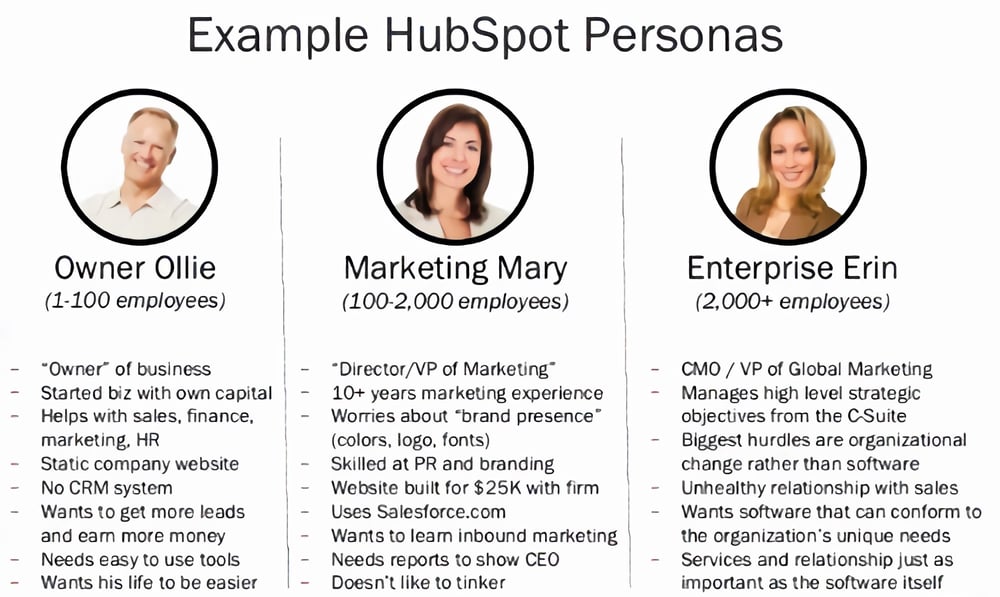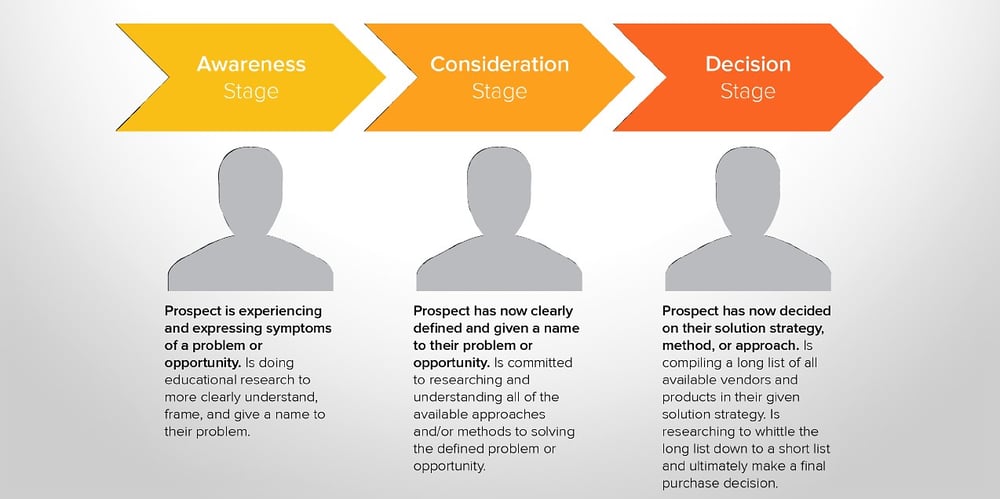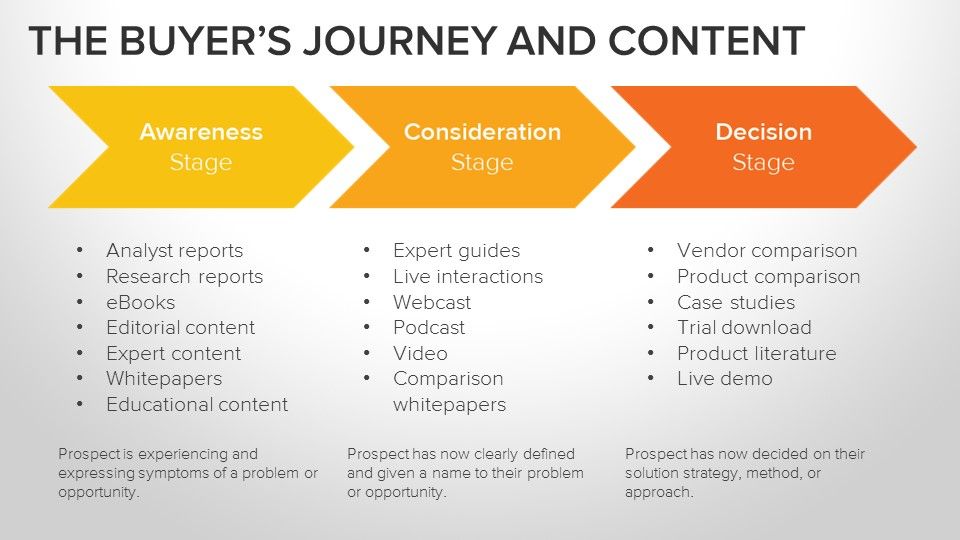Firstly, it’s important to note that while Inbound Marketers Attract, Engage and Delight their target market, they are always being supported by the…
3 pillars of Inbound Marketing
1. Growth-Driven-Design or GDD websites
Using the inbound marketing methodology, websites have a growth-driven-design. This means we dive into what the best performing parts of the website are, search-engine-optimise the pages that need attention and cut the deadweight.
Once you have that new foundation for growth, the website is analyzed at regular intervals so that 'design' can be improved from a data-centric perspective - a renaissance movement geared towards getting more traffic and leads. User journey and content resonance related data is harnessed on a continuous basis to go from strength to strength.
Growth-driven-design is a better way to approach website design and results in a more dynamic, user-friendly, content driven website with traffic and inbound lead generation front-and-center. This is the cornerstone of an ROI-driven Inbound Marketing strategy.
Essentially - websites should be treated as living, breathing things interacting with the world - and sometimes a bit of therapy makes the world of difference!
2. Search Engine Optimisation
Search engine optimised content is quintessential to all the content that fits within an Inbound Marketing campaign. In fact, SEO is not just a consideration or an afterthought you half-implement when you're done writing a blog - it should be integrated and considered throughout the content creation process in detail.
Going hand-in-hand with growth-driven-design, a well-considered keyword and search engine optimisation strategy can be the difference between a pretty website that nobody even looks at and powerhouse that pops up whenever anyones looking for the solutions it provides - every time.
Granted - the search engine optimisation aspect of a solid inbound marketing strategy takes time - but the long-terms benefits to your ROI are immense.
3. CRM
CRM software/platforms encompass various aspects of an inbound marketers digital presence. From user-friendly, GDD websites to marketing automation which helps gain, track and qualify leads - implementing CRM can transform marketing efforts from being engagement-focused to being leads/new business oriented.
We’ve found that HubSpot works best for us in this regard because it’s very simple to operate and integrates well with social media and CRM for lead management & marketing automation - all while making SEO optimised blogging a breeze.
"A CRM's a CRM's a CRM" you might hear - and there may be some truth to that but the difference with HubSpot is that it's so much more (cheesy sounding, I know, but bear with me). HubSpot is a marketing, sales and service machine taking on software designed solely for one of those purposes - and conquering. The beauty of inbound marketing and sales using HubSpot it is that you can unlock more doors as you decide to - it grows with you. Having one central place for your inbound marketing and sales efforts prevents headaches down the line, which come with going for different solutions for different use cases. It can be tricky getting different software solutions talking to one another! So although we work with various platforms and the fact that integrations are a speciality of ours, we still recommend HubSpot 100%.
Next, we consider contacts’ buyer personas and position along the buyer journey...
Buyer Personas
Expanding on basic demographics,
“A buyer persona is a semi-fictional representation of your ideal customer based on market research and real data about your existing customers. When creating your buyer persona(s), consider including customer demographics, behavior patterns, motivations, and goals. The more detailed you are, the better.”
Using a mix of research, we usually choose up to 3 personas to target. We define them and update them when necessary. Contacts are also profiled and reached out to using CRM/marketing automation in accordance with these buyer personas.
Having buyer persona information on-hand allows you to run far more effective marketing campaigns - it's about speaking their language, split-testing everything and making a lucrative impact.
Here are some examples:

The Buyer's Journey
The buyer's journey is another important consideration because prospects respond to what you send them differently depending on how familiar they are with your brand.
Inbound marketing dictates that you cannot speak to a new lead the same way as you would an opportunity just about ready to sign the dotted line. Sounds obvious, but the real difference is that a solid inbound marketing strategy makes sure that in the background, the relevant people are seeing the right content.

Attract with Inbound Marketing
Inbound Marketing methodology says you attract interest by being an opinion leader who’s found online. And for that to happen - Inbound Marketers develop powerful content strategies.
Transforming content into leads and customers is what Inbound Marketers do, and to achieve this we first need a solid content strategy that feeds into sophisticated digital infrastructure...
3 considerations for a powerful inbound marketing content strategy
1) Intelligent channel selection (social media platforms, emails, podcasts, video marketing ect).
Choosing the social media platforms most suited to your brand is very important. Regarding Inbound Marketing campaigns, we’re finding LinkedIn gets incredible results for B2B because of the ability to go straight to the targets’ mail inboxes. And for B2C - a mix of platforms, mostly including Facebook.
2) Intelligent medium selection (Written, Video, Podcast ect.) can mean the difference between your content being forgotten within 10 minutes and downloaded, shared & enjoyed for months. We’ve found that professional video content is phenomenal for buyers in all 3 stages of the buyers’ journey.
Did you know:
“59% of executives say they would rather watch a video than read text.”
“Including video on landing pages can increase conversion rates by 80%.”
3) SMART goals [Specific, Measurable (we prefer qualified leads as the deliverable), Attainable, Realistic, Time-bound]
A robust inbound marketing strategy involves openly available content and gated content, which is only made available after a prospect fills out a form - giving you their contact details and more.
We’re still in the ‘Attract’ stage, so for now, let’s focus on the...
Openly Available Online Content
This content (in the form of website blogs, video's and more) shared on social media is key to building trust with your market. And the best way to form a meaningful relationship is to create engaging content that:
- Speaks directly to them in their own language.
- Adds value aside from the benefits of your services/products to ensure broader appeal.
"Your market doesn’t like it when you go on and on about the benefits of choosing your brand and prefer when you give them insights about your industry at large and equip them with the education & tools they need to succeed.”
Engage with Inbound Marketing
The whole point of investing in thought-leadership content is to see return on investment. ROI measured in relevant leads gained and of course, clients & customers.
To see measurable returns from your inbound marketing campaign, you’re going to have to have some clever digital infrastructure in place…
Deeper-Dive, Gated Content Assets
In a typical inbound marketing campaign, blogs are usually prospects' main channel to accessing the landing pages hosting the deeper-dive, gated content assets. We generally use social media campaigns to link to the landing page. Because the landing pages have a built-in form that captures contact info. Leads are sent to the CRM and clever marketing automation takes over to qualify the leads for direct sales.
The best way to show you how much value these CTAs and landing pages add is to actually let you experience it for yourself, so we've placed a CTA below. Click on it and follow the steps to see what could be implemented for your brand…
So not only must the content asset itself (an infographic, white paper, checklist, interactive tool ect.) be genuinely helpful and engaging, your free content that came before needs to have built enough trust to convince your prospects that the content is useful and that their info is safe with you.

Marketing Automation
Inbound Marketing is efficient. And its methodology combines perfectly with the use of marketing automation to qualify leads. This comes in the form of nurturing emails specially designed to not only greet the person by name, but also be customised/relative to the content asset he/she downloaded as well as their job junction (also a part of the form).
These nurturing emails offer more helpful content based on the contacts history with your brand so to qualify them - saving our sales team tons of time and letting them focus on the contacts that already have a relationship with the brand. Everything is tracked and sales knows the person a lot better upon first encounter. Again, for our clients, we generally opt for HubSpot because it's so simple and effective. There are however many CRMs that offer these sorts of features.
Delight your customers with inbound marketing
“Customer delight is exceeding a customer's expectations to create a positive customer experience with a product or brand. By going above and beyond to create a memorable customer experience with things like discounts, content assets, promotion, or spontaneous outreach to your customers, you can foster an emotional connection. A connection that enhances sense of good-will that will make them more likely to be loyal to your brand long-term.” - HubSpot
How to Delight Your Customers
1) Solve customers' problems.
Climb into the heads of your target market and immerse yourself in their daily life to understand their pain points. And if you don’t know, do more research. Or just ask them.
Once you understand their pain points, you’re equipped to craft content strategies designed to appeal to them.
2) Be timely.
It’s really important to to keep abreast with trends in your industry so that you can produce content about them as they’re playing out. Trends should be latched on to for increased website traffic through your blog.
A big component of customer delight is being available and responsive whenever they reach out. Whether the issue is big or small, show your customers that you're prioritizing them by responding quickly. Even if you can't solve the issue right away, let them know that you're working on it.
3) Be helpful.
“Market with a magnet, not a shotgun” is what we say and you can only do this by:
- Creating engaging content in the mediums your markets' prefer;
- Ensuring content adds value beyond just being about the benefits you offer;
- Never interrupting the target market. Rather - meet them where they are and make sure your brand appears just as they’re looking for a solution you offer.
4) Help customers achieve their goals.
- Always be mindful of your customers ambitions.
- Keep an open mind about various solutions and split-test where possible.
- Communicate in a 'language' they understand and resonate with.
- Do whatever it takes to give them the best value for money.
5) Listen closely to customer feedback
Your customers/clients know what they want, so read the lines before you read between them. Respond intelligently & transparently.
6) Be enthusiastic.
Have fun with it! Business is so much more enjoyable for everyone when you’re enthusiastic about your work and results you achieve, so do what you’ve got to do to remain positive and excited!
If you enjoyed this piece and would like a deeper understanding of Inbound Marketing along with practical examples to help you apply it to your own brand, we highly recommend downloading our free Beginners Guide to Inbound.





